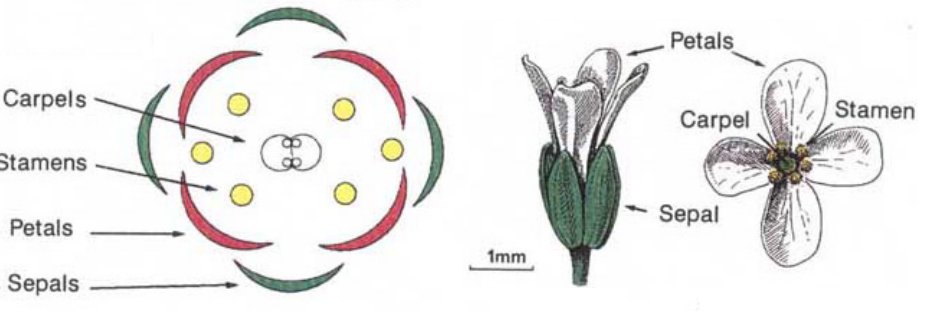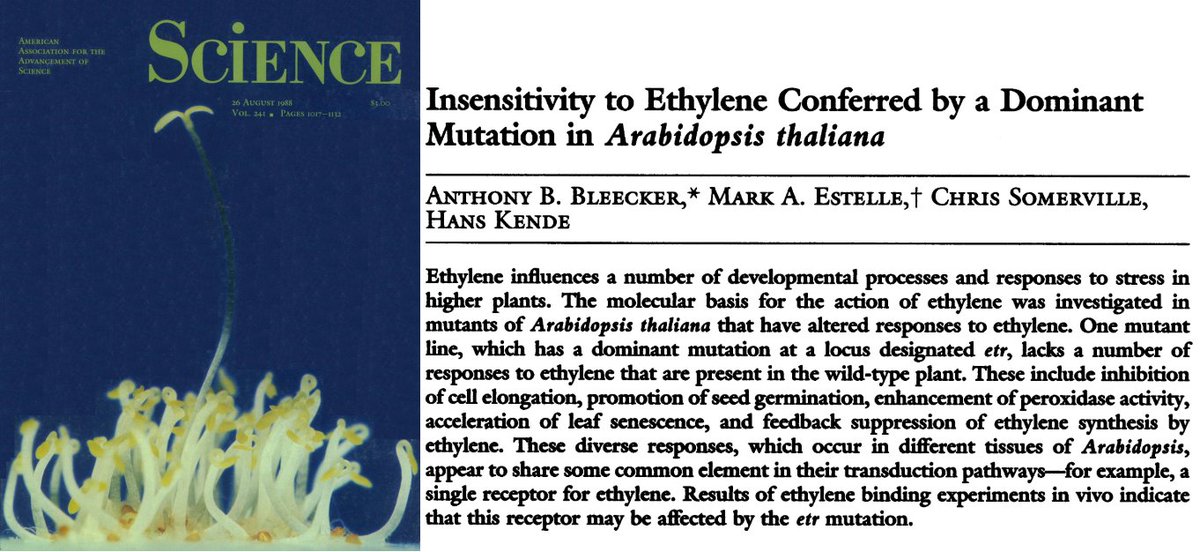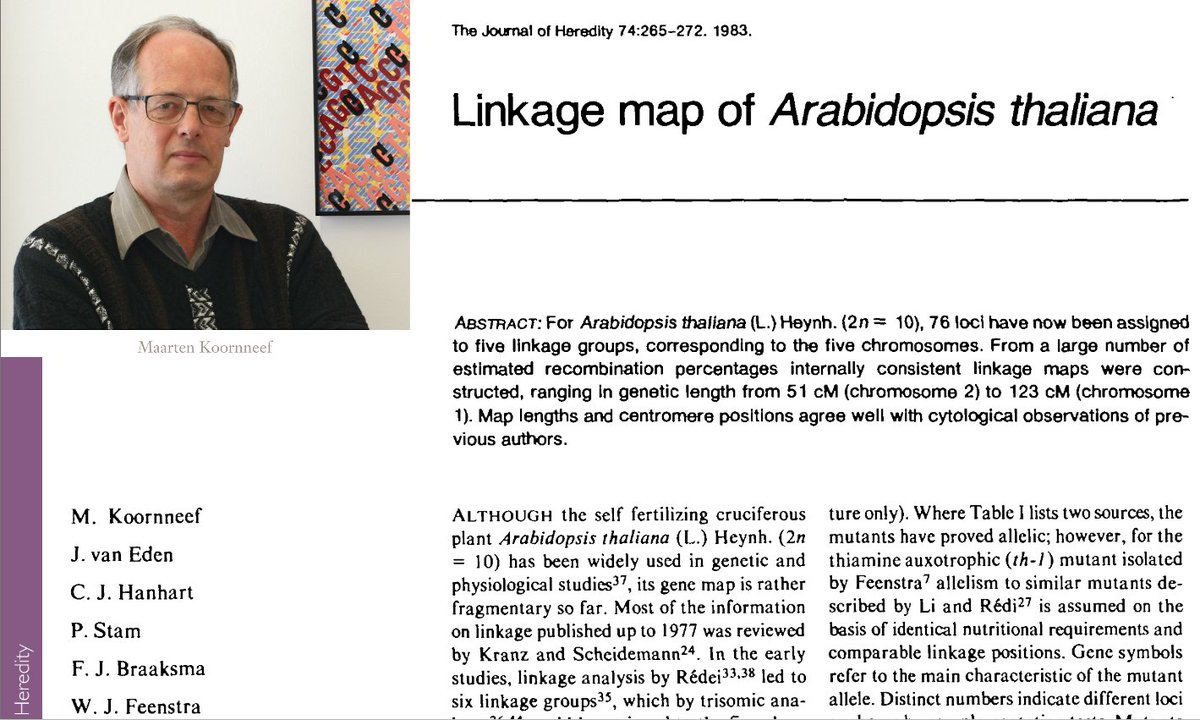#PlantScienceClassics #1: The ABC model. 30 years ago, in 1991, plant science legends John Bowman, David Smyth and Elliott Meyerowitz published their groundbreaking paper on the ABC model in @Dev_journal: doi.org/10.1242/dev.11… 

A regular Arabidopsis flower is composed of 4 whorls, each featuring specific organs: 4 sepals in the outer whorl, followed by 4 petals, then 6 stamen & 2 carpels in the inner whorl. These identities are controlled by the APETALA2 (AP2), PISTILLATA (PI) & AGAMOUS (AG) genes. 

Mutant analysis of these genes showed that ap2 affects whorls 1 & 2 (Region A), pi affects whorls 2 & 3 (Region B), and ag affects whorls 3 & 4 (Region C). For their 1991 paper, the authors added the analysis of double and triple mutants of these three genes. 

Based on these analyses, the authors concluded that AP2 confers sepal identity, and AG carpel identity, while the combinatorial effects of AP2 & PI produce petals, and PI & AG produce stamen. And crucially: AP2 & AG must be mutually exclusive! 

The beauty of the ABC model is that it is so simple and elegant. And the key in its description was not the development of new methods, tools or mutants, but to come up with a conceptual framework to integrate the existing knowledge. 

Following the 1991 @Dev_journal paper, Elliott Meyerowitz teamed up with fellow legend, & #Antirrhinum flower expert, Enrico Coen, to nail down the details of the ABC model as general plant model, in their masterpiece ‘The war of the whorls’, published in @Nature later that year. 

And, as reading suggestion for today’s researchers, the authors of the original paper have reunited in 2012, on the occasion of @Dev_journal‘s 25th anniversary, to write a ‘Behind the Scenes’ on their original paper, which is a really interesting read: doi.org/10.1242/dev.08… 

• • •
Missing some Tweet in this thread? You can try to
force a refresh




















